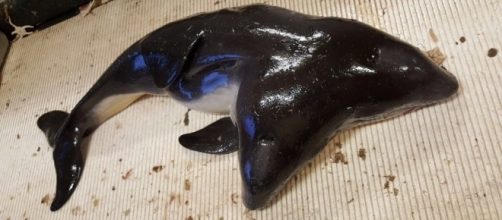For the first time, there has been a known sighting of a conjoined twin porpoise made in the North Sea. The porpoise was conjoined at the head, thus it was two-headed. In other aquatic news, the famed Bosphorus strait that runs through Istanbul has changed color due to an explosion of plankton.
The conjoined porpoise
The two-headed conjoined porpoise was found dead after being caught up in a net by a fisherman in the North Sea, about 17 miles (27.35 kilometers) west of the town of Hook of Holland, Netherlands. It was determined to be a baby male, weighing about 13 pounds (5.89 kilograms) and being around two feet (61 centimeters) long.
Unfortunately, scientists will never get a chance to study the porpoise. The crew of fisherman decided to throw the body back into the water became they feared keeping it would have been illegal. All that scientists have is photos that the fisherman took to document their strange finding.
A team of scientists at the National History Museum of Rotterdam authored the report on the porpoise using the photos. They noted that normal twins in aquatic mammals (cetaceans) is tremendously rare due to the lack of room in the body of females. It was only recently, 2014, that the first known case of normal porpoise twins was reported. This is only the tenth known case of symmetrical conjoined twins among aquatic mammals.
Plankton turned the Bosphorus strait turquoise
In the past few days, residents of Turkey's largest city Istanbul have been alarmed by the fact that the blue waters of the Bosphorus strait have changed to a milky turquoise color. Some residents took to social media to express concern that it could be pollution or linked to Monday's earthquake.
However, scientists said that there was no reason to be alarmed as the reason is due to a sudden surge in plankton species across the Black Sea.
Environmental science professor Ahmet Cemal Saydam, who teaches at Ankara's Hacettepe University, said that an explosion in the numbers of a certain type of plankton is the culprit.
This would be the micro-organism Emiliania huxleyi, which is also commonly known as Ehux. They are single-celled and can only be seen by using a microscope. In fact, Saydam reassured that the explosion of Ehux was a good thing was the Black Sea, as it would give anchovies that live there a lot of food to eat. This is also good for Istanbul since anchovies are a popular menu item in the city.


